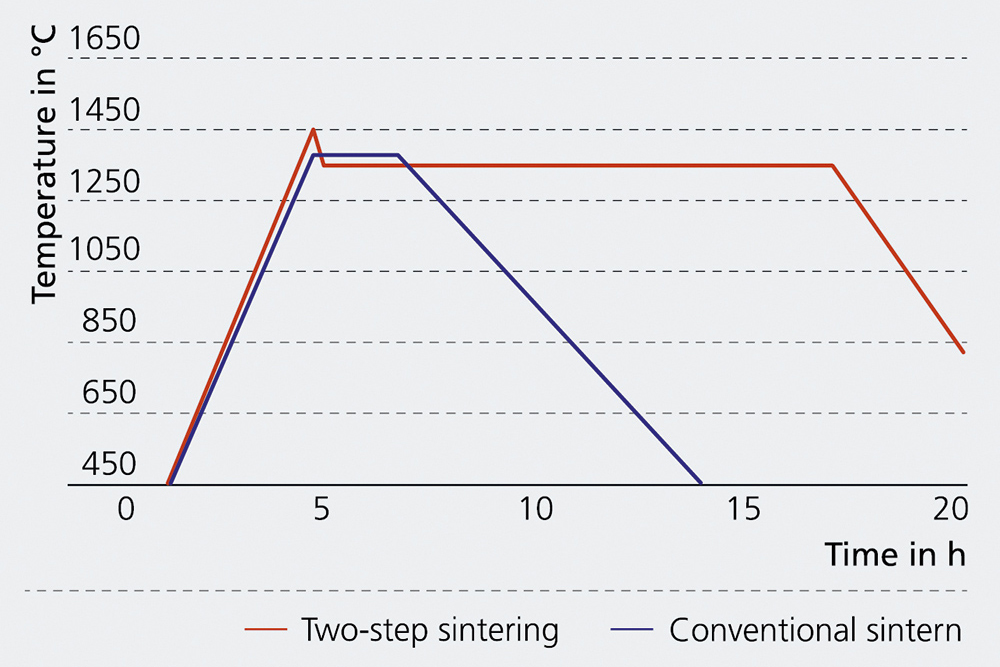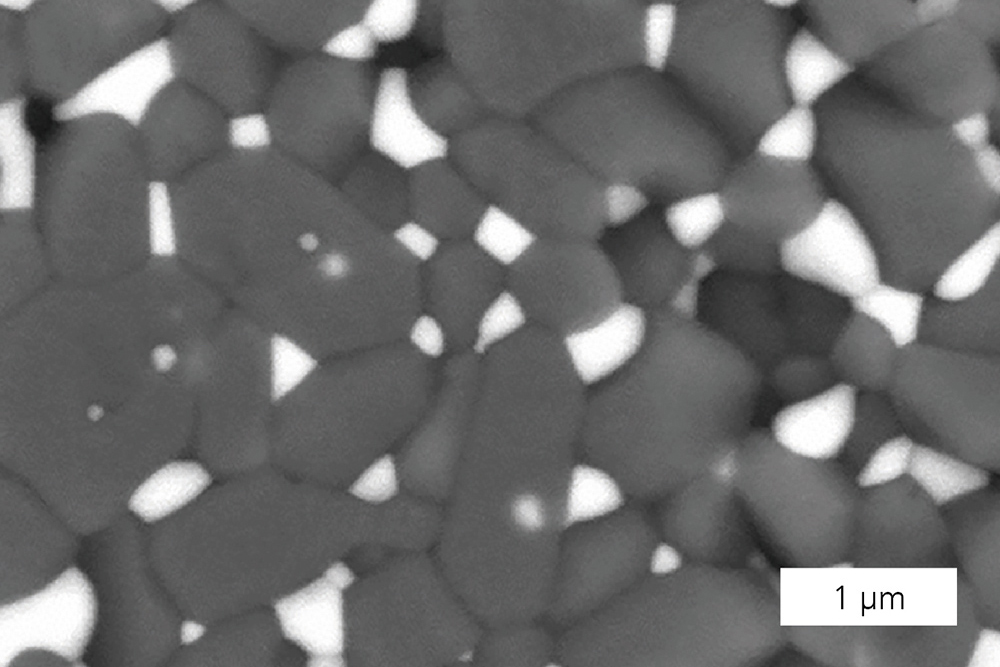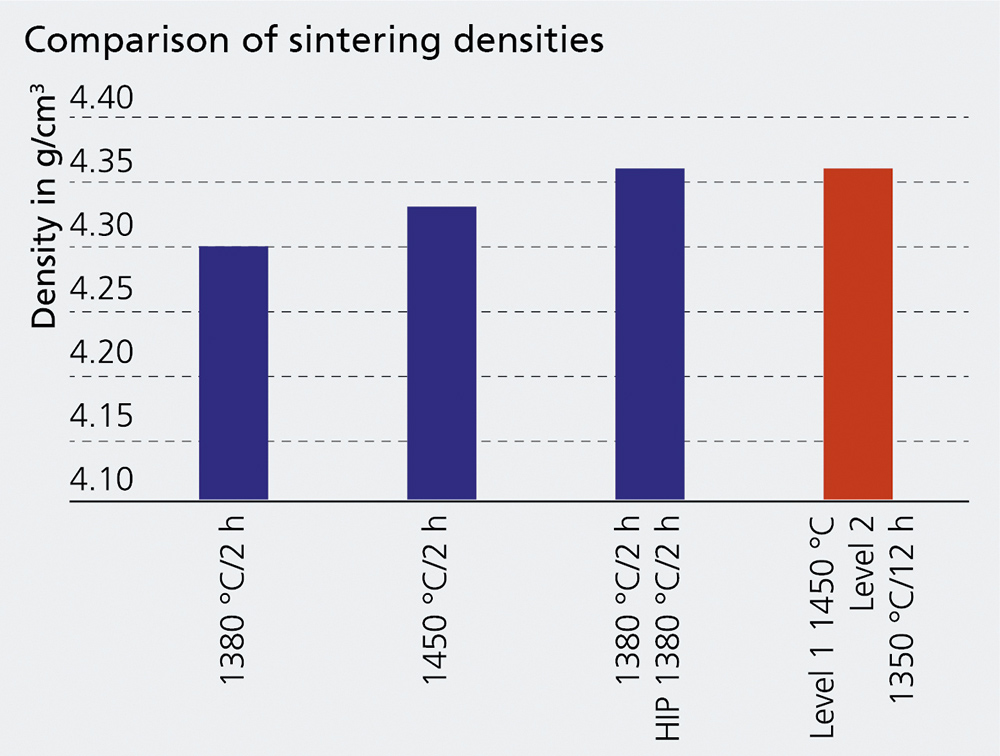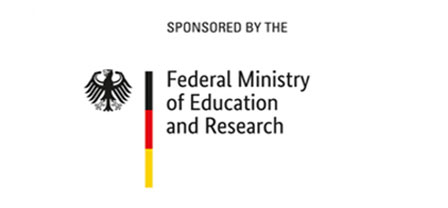


Zirconia (ZrO2)-toughened alumina (Al2O3), known as ZTA ceramics, belongs to the mixed oxide ceramics and is more hydrothermally resistant and stronger than pure ZrO2 or pure Al2O3. ZTA ceramics are therefore ideally suited for medical applications. The distribution of the individual phases is decisive for the improved properties of mixed oxide ceramics: A homogeneous phase distribution and high sintering density result in higher strength and hardness. ZTA ceramics are conventionally produced either through single-step sintering or through post- compaction via hot isostatic pressing (HIP) after sintering, which is energy- and cost-intensive. Fraunhofer IKTS has established a two-step sintering method, which achieves the same dense microstructure (with comparable grain size) as conventional methods but is considerably more resource- and energyefficient.
The green bodies were initially produced by grinding the commercially available raw materials (75 wt % Al2O3 and 25 wt % ZrO2 – stabilized with 3 mol% yttrium oxide) in a high-energy ball mill, followed by spray granulation and subsequent shaping using the dry pressing process. Green bodies with a density of > 56 % theoretical density were divided into three groups – the first was sintered conventionally in air, the second subsequently treated with HIP, while the third group was sintered in air in two steps. The sintering densities show that two-steps sintering compacts much better than single-stage sintering, with a complete compaction of > 99.9 % of theoretical density (corresponds to 4.36 g/cm3). In comparison with sintering and the subsequent cost-intensive HIP treatment, two-step sintering achieves equally good results in terms of sintering density and microstructure. Thus, two-stage sintering is a promising alternative sintering method to increase energy efficiency.
Services offered
- Material synthesis and development on the basis of commercially available raw materials
- Material-specific shaping and development of prototype components and pilot series
- Consulting on material-, construction- and application-specific issues

